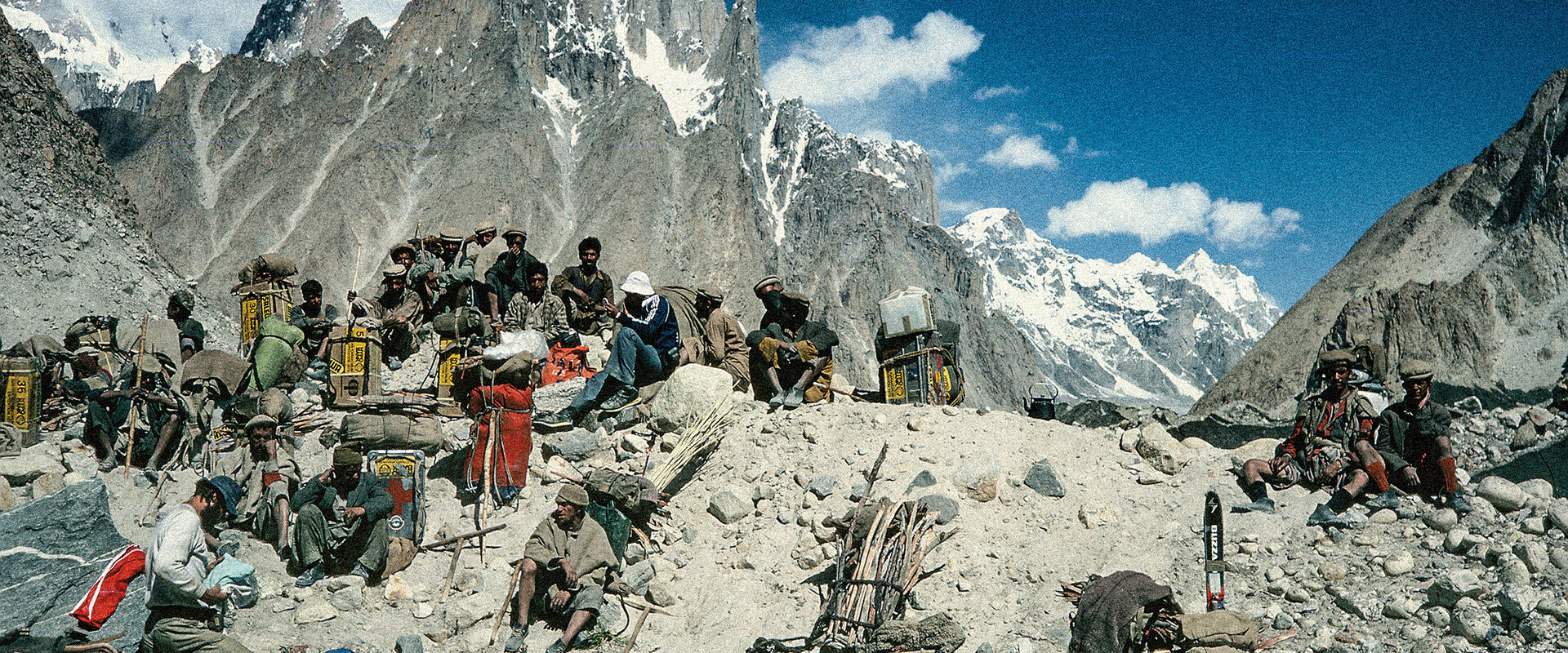’8,000 & more’
The brothers Wastl (born 1937) and Peter (born 1941) Wörgötter from Saalfelden developed a love of the mountains at a young age and began mountaineering and climbing at an early age. In the 50s and 60s, they travelled in the local mountains and the Western and Eastern Alps. From the 70s onwards, expeditions were organised all over the world. The Saalfelden brothers wrote alpine history. This is documented in the current special exhibition at Museum Schloss Ritzen Saalfelden.
The exhibition is a journey through the history of mountaineering. Pioneering deeds and world records, a departure into the unknown. Highlights of the Wörgötter brothers were the joint second ascent of the fourth highest mountain in the world, the Lhotse (8,511 m), in 1977, the world's first ski descent of an 8,000 m peak, the 8,156 m high Manaslu by Peter and the first Austrian ascent of the 8,091 m high Annapurna by Wastl in 1982. In the same year, Wastl also survived a helicopter crash in the Antarctic and travelled 1,000 kilometres through the East Antarctic on a skidoo. Over the years, Wastl went on to climb numerous 7,000 and 8,000 metre peaks such as Cho Oyu (8,201m) in Tibet, Broad Peak (8,047m) in Pakistan, Pik Kommunismus (7,498m) in Russia, Aconcagua (7,035m) in Argentina, the 8046m high Shisha Pangma in Tibet (first ski ascent) and many more.
Peter Wörgötter and Sepp Millinger (Waidring) even made it into the Guinness Book of Records 40 years ago with the first ski descent from the 8,157 metre-high Manaslu. ‘You have to ski the Manaslu!’ - Peter Wörgötter got this tip from his brother Wastl, who had already been on a Manaslu ascent in 1973. The ski descent from an 8,000 metre peak seemed more than daring. Peter found the perfect expedition partner in Sepp Millinger from Waidring. On 19 May 1981, Peter and Sepp were the first Austrians to reach the eighth highest mountain in the world via the north route. Skiing in the death zone without artificial oxygen was better than they had feared. ‘One problem was the breathing rhythm that you lose when skiing, so you could only continue after taking a breather. Sepp lost a ski because he didn't have a catch strap, but he managed to get back to camp 5 at 7,200 metres with both skis for tea,’ explains Peter Wörgötter. Despite the challenges, they managed the descent and made alpine history!
Many things were different back then. The clothing, the equipment, the diet - all of this has evolved over the years. There were not always successes; many mountaineers and expedition participants lost their lives.
‘I am convinced that greed for the summit at any price cannot be the message,’ says Peter Wörgötter from Saalfelden today. As alpine consultant for mountaineering at the Salzburg regional association of the Austrian Alpine Association (ÖAV), he volunteered for 35 years to train members by organising annual ski touring, rope and climbing technique courses.
In the exhibition ‘8,000 & more’, in the Schoss Ritzen Museum in Saalfelden, the brothers show many original items of equipment, photos and other documents. Short films of the expedition are also shown. The second part of the exhibition is dedicated to the mountains and alpine history in the Saalfelden area. The exhibition is on display until February 2022.


